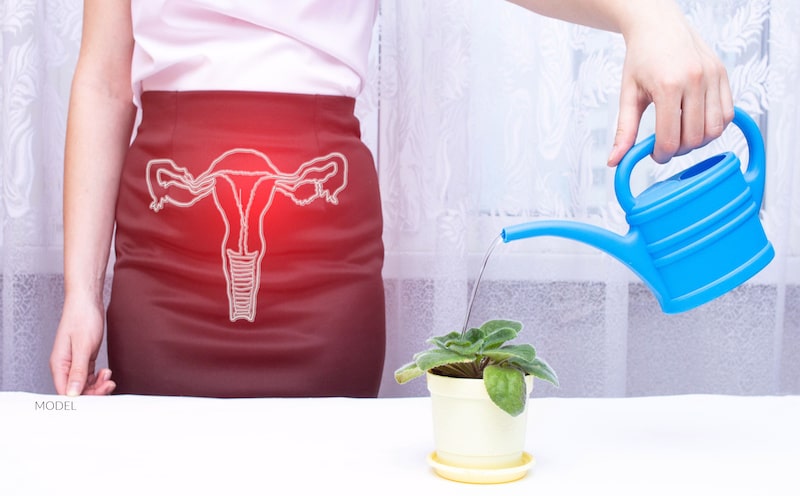What Can Women Do About Incontinence?
Posted June 08, 2022 in Overactive Bladder
3 Minute Read:
Many women think that urinary incontinence is just part of aging, but that is not true; most causes of incontinence are related to pregnancy, childbirth, and menopause.

These conditions can cause pelvic muscles to weaken and interfere with the signals sent out by the nerves that control urine retention and output.
Other Causes of Urinary Incontinence
There are other causes of urinary incontinence as well:
- Being overweight – Excess weight puts additional pressure on the bladder, and over time, this can weaken the muscles.
- Chronic constipation – Bladder control issues can happen to those with persistent constipation, as straining can put pressure on the bladder and weaken pelvic floor muscles.
- Nerve damage – Damaged nerves send too many or too few signals to the bladder leading to leakage or undue urgency. Nerve damage in the urethra, bladder, or pelvic floor muscles can be caused by childbirth and illnesses such as multiple sclerosis and diabetes.
- Surgery – Surgeries involving female reproductive organs, like hysterectomy, can impact the pelvic floor muscles, especially when the uterus is removed. When these muscles are damaged, the bladder can stop working the way it should, and this may lead to urinary incontinence.
Temporary incontinence may be caused by:
Medications – Some medicines have side effects that include urinary incontinence. Diuretics are sometimes used to treat hypertension, heart failure, cirrhosis, and kidney disease and are known to cause incontinence. Stopping these medications (under medical supervision) should alleviate the problem.
Caffeine – Drinking caffeinated drinks can lead to urgency incontinence as it causes the bladder to fill up fast. Limit caffeine to help with incontinence, especially at night.
Infection – Urinary tract, bladder, and kidney infections can cause urinary incontinence, which should subside once successfully treated.
What Steps Should Women Take to Manage Urinary Incontinence?
Besides limiting caffeine, the first thing women suffering from any urinary condition is to see a doctor because incontinence may indicate an underlying disease.
Urinary Incontinence Treatments
There are treatments available that can reduce or end these distressing and embarrassing symptoms.
Kegel exercises
Kegel exercises can strengthen the pelvic floor and is the first step toward achieving relief from urinary incontinence.
How to Perform Kegel Exercises
Identify your pelvic floor muscles by stopping your urine flow midstream. This action will engage these muscles and allow you to recreate the movement in any position.
Maximize your muscles by imagining yourself sitting on a marble. Tighten these muscles as though you’re trying to lift the marble. Do this for three seconds at a time, then relax for another three seconds. Perform 10 to 15 repetitions of this exercise three times a day.
Be sure to focus only on the pelvic floor, ensure that you are not flexing your abdominal, thigh, or buttock muscles, and remember to breathe.
Surgery
Sometimes, in severe cases of incontinence not helped with kegel exercises, surgery may be necessary. Surgery for urinary incontinence is minimally invasive and usually very effective.
Alternative to Surgery
Vaginal Pessaries
A pessary is a plastic device that can be fitted for women with incontinence to help support prolapsed pelvic organs. Pessaries are undetectable when fitted correctly, and women with this device can usually urinate or pass bowel movements without a problem.
Women’s OB/GYN Medical Group in Santa Rosa, CA Can Help
If you are suffering from urinary incontinence and live in or near Santa Rosa, California, call us today at Many women think that urinary incontinence is just part of aging, but that is not true; the causes of incontinence are related more to pregnancy, childbirth, and menopause. Our doctors have the experience and knowledge to help women with incontinence regain control and confidence.